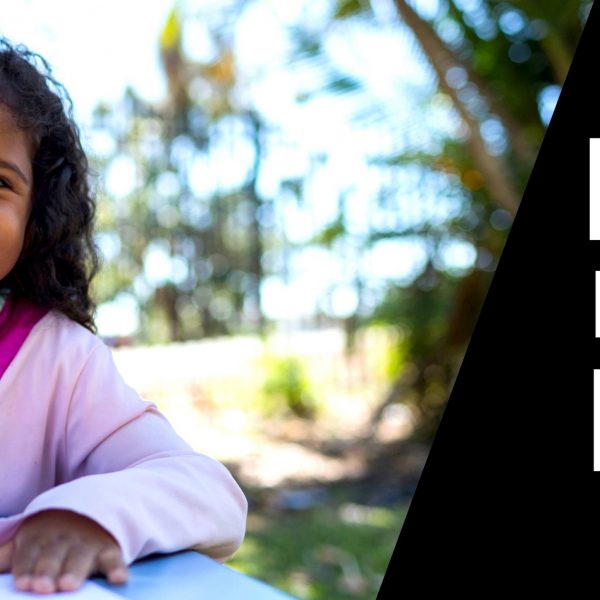A new study of Warlpiri language shows how ‘baby talk’ helps little kids learn to speak

Parents and other caregivers typically modify their speech when they talk to babies and young children.
They use simple sentences and special words, like “nana” for banana. They also speak slowly, use a higher pitch, and exaggerate the ups and downs of the “tune” of their speech. In many languages, caregivers also exaggerate their vowels in a process called “hyperarticulation”.
Researchers refer to all these things as “child or infant-directed speech”. But it is also commonly known as “motherese” or “baby talk”.
Baby talk is used around the world. A 2022 study involving people from 187 countries showed adults can tell whether speech is intended for children or adults, even when they have no familiarity with the language being used.
Our new research looks at how baby talk works in the Australian Indigenous language Warlpiri.
Why do we use baby talk?
Simplifying speech and using baby talk modifications makes it easier for children to understand. But it also helps children regulate their emotions because it sounds more positive.
On top of this, the enhanced “tune” is thought to attract and maintain children’s attention to speech and the exaggerated vowels help babies learn the sounds of languages.
However, almost all we know about the shape and purpose of baby talk is based on studies of a few European languages, Mandarin and Japanese.
These are languages spoken in predominantly western, educated, industrialised, rich, democratic cultures. This excludes thousands of other languages spoken in the world.
For example, where most of the world’s languages have just five to seven vowel sounds, many European languages, including English, have more than double that number, making those languages rather unusual. This raises the question of what modifications speakers use in other types of languages and cultures.
Do they use the same speech modifications to children? And if so, why?
Our research
Our research, published this month, investigates the use and purpose of child-directed speech in Warlpiri. Warlpiri is spoken in Central Australia by more than 3,000 people and has three vowel sounds: “i”, “a”, and “u”, which correspond loosely to the vowels in “bee”, “bah”, and “boo” in English.
To compare vowels in words spoken to children to words spoken to adults, we videoed four Warlpiri-speaking caregivers in conversation with other familiar adults and four young children (aged between two and three) at their homes.
Our approach deliberately considers the real-life social contexts in which conversations are had. Most previous work has recorded interactions with children in lab settings, and then recorded caregiver-adult interactions separately, typically with an unfamiliar researcher.
Warlpiri baby talk helps children learn new words
Our study showed Warlpiri speakers, with just three vowels, also use pitch and vowel modifications in their speech to young children.
It is the first time a finding like this has been established.
This is similar to what English speakers do. But there are also important differences.
Firstly, Warlpiri speakers raise their pitch and change the quality of their vowels so that they sound more like vowels produced by children. This modification likely enhances the children’s attention to speech. As other research has shown children prefer to listen to the voices of other children over adults.
Secondly, Warlpiri speakers use vowel modifications for a special teaching purpose.
Walpiri caregivers pronounce nouns with very clear and exaggerated vowels. This is different from how they pronounce vowels in other parts of speech, such as verbs. It is also very different from the way adult Walpiri speakers speak to each other. This helps little children learn new words by ensuring the names for things (often “toys” or “food”) stand out in speech.
Adults are probably not aware of how their vowels sound, or how they are changing them. But they are aware of other aspects of how they change their speech in baby talk style. As Alice Nelson Napurrurla also told us:
When we are sitting and talking with the little ones, we must always use their words […] like when we say ‘mangarri’ [food], ‘miyi’ [vegetable food], they say ‘nyanya’ [food]. Or when we say ‘jinta-kari’, ‘jinta-kari’ means ‘another one’, but the little ones they use ‘jija-jayi’ [another one] […] we’ve got to use their language.
Our study is the first to observe that caregivers use vowel and pitch modifications to achieve two different goals at the same time: to hold child attention and to teach the names for things.
We believe they are able to do this because Warlpiri has only three vowels. By contrast, a new study of Danish, which has more than 20 vowels, revealed Danish caregivers make their speech slower and exaggerate the “tune” but do not hyperarticulate their vowels. This shows us while baby talk might be a universal phenomenon, the vowel inventory of each language plays an important role in determining what strategies caregivers can use.
What next?
Our research shows again how baby talk is not an affectation or a silly thing adults do. It helps little children learn language.
Warlpiri caregivers make sophisticated use of baby talk modifications, showing the importance of further research on the shape and function of child-directed speech in diverse languages from across the world.![]()
Rikke Louise Bundgaard-Nielsen, Teaching Associate, The University of Melbourne; Alice Nelson, Warlpiri Indigenous Knowledge Holder, Indigenous Knowledge; Carmel O’Shannessy, Associate Professor of linguistics, Australian National University; Jessie Bartlett, Warlpiri Indigenous Knowledge Holder, Indigenous Knowledge, and Vanessa Napaltjari Davis, Researcher, Tangentyere Research Hub, Australian National University
This article is republished from The Conversation under a Creative Commons license. Read the original article.
Popular

Practice
Provider
Quality
Research
Workforce
New activity booklet supports everyday conversations to keep children safe
2025-07-10 09:00:16
by Fiona Alston

Quality
Practice
Provider
Workforce
Reclaiming Joy: Why connection, curiosity and care still matter in early childhood education
2025-07-09 10:00:07
by Fiona Alston

Policy
Practice
Provider
Quality
Research
Workforce
Beyond the headlines: celebrating educators and the power of positive relationships in early learning
2025-07-07 10:00:24
by Fiona Alston













